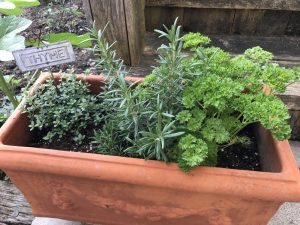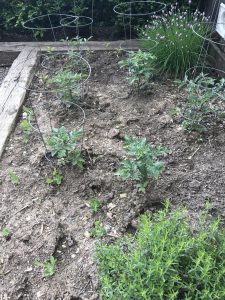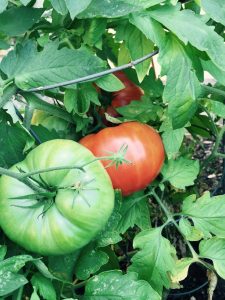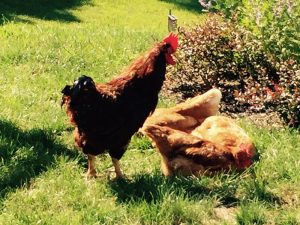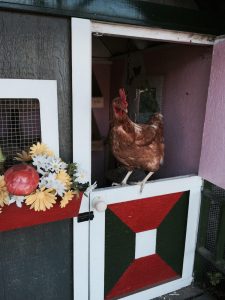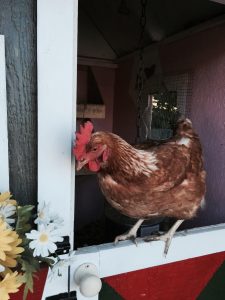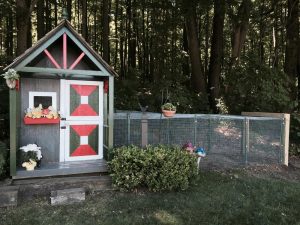
Penelope checks out the front porch.
The time had come to move my girls into a new home. They had out-grown their previous coop and since they all lay eggs, also needed nesting boxes in which to lay them. I also wanted to provide them with outdoor space or a ‘run’ for times when we are not around so they have the opportunity to go outside and scratch, take dust baths, and do the things that chickens like to do. It had to be very secure, since their primary predators – raccoons and weasels are very crafty and in the case of the weasel, can squeeze into very small openings. After a little convincing that they had out-grown the playhouse, my daughters reluctantly handed over the keys to the new owners – my hens. I cut a hole into the side so as they can access the outdoor pen. Made a door with a latch so they can be closed in at night when needed. The outdoor pen or ‘run’ as they are usually called, is constructed of very sturdy metal stakes driven into the ground. Then we wrapped a very strong metal mesh securely around and over the top. I hung nesting boxes and a perch inside the coop. Their food and water containers are suspended from hooks to keep them clean. There are many complexities to keeping chickens if you have their best interests in mind. I’m not a pro – still learning as I go along, but I have some key points to share I will list below for basic chicken keeping. My girls are very happy in their new home. It is said that happy chickens lay eggs…….I have 6 hens and get 6 eggs every day and apparently someone is exceptionally happy because sometimes I get seven!
Some basics for chicken keeping:
Keep their food and water suspended off the ground and away from where they roost, otherwise it will quickly become full of dirt, coop shavings and poop (yes, I said it and it happens – a lot!).
Chickens like to roost at night, so be sure to provide them something to perch upon up off the ground.
This is a good one….as for bedding or coop floor cover, mix very dry leaves and cedar shavings together. Don’t ask me why, but I read this and it works. Somehow that coop stays amazingly clean and virtually odor free. Just add more as needed to what is already there. No need to clean – ever!
If your chickens don’t free-range, be sure to add some chicken scratch to their run. This is a mixture of seeds, small rocks and such that gives them a variety to eat plus the rocks aid in their digestion as they do not have teeth.
If they do free-range, I’ll warn you here. First be aware of predators: hawks, fox, neighbors dogs. Secondly, if you love your flower beds, so will your chickens.

Miss C lays her egg.



